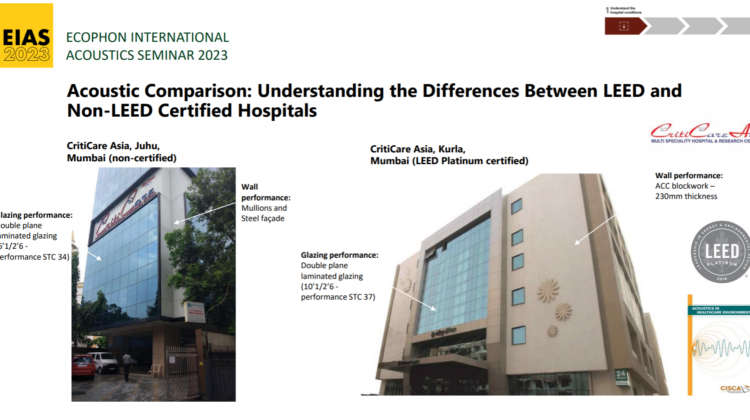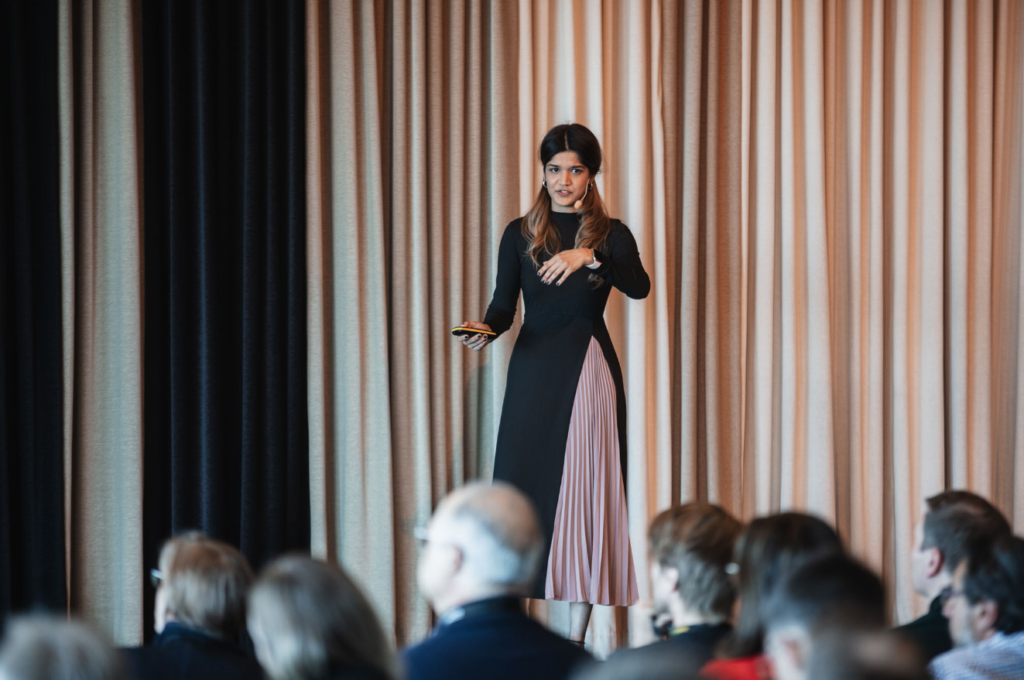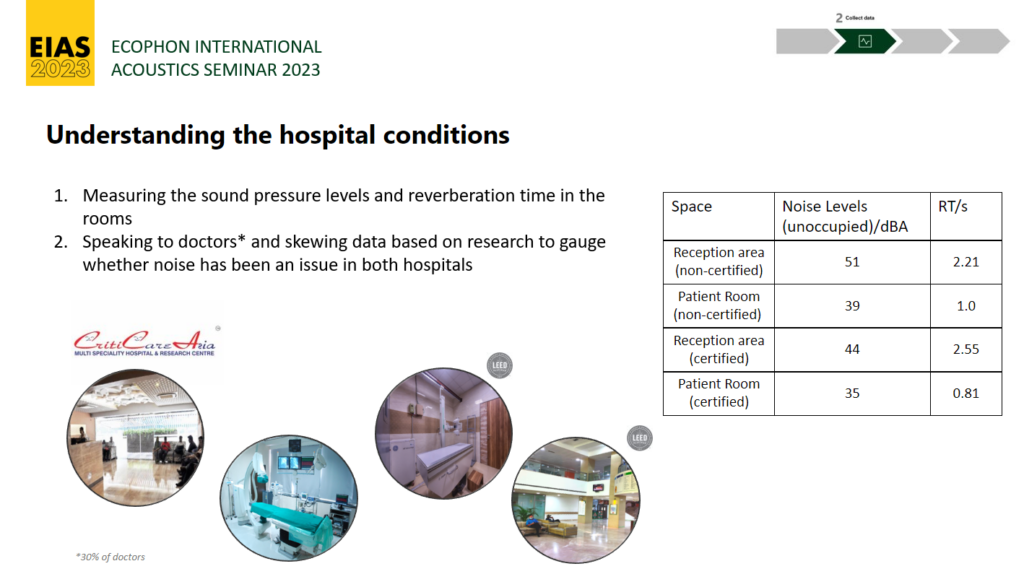
Growing up with parents that are also doctors, Pooja Ganatra – a sustainability and acoustic consultant for Buro Happold – spent much of her youth in hospitals. During this time, she witnessed the challenges poor acoustics imposed on patients and hospital workers first-hand. This inspired her to conduct research on this important subject, which she presented at EIAS 2023. Her study asks a crucial question: Can fulfilling the acoustic criteria in green building certifications help to mitigate some of the acoustic challenges in hospitals?

“Healthcare facilities are highly sensitive spaces.” Pooja explains. “It’s essential that we ensure occupants are comfortable at all times. But the literature shows that 66% of healthcare workers find their surroundings to be noisy and 86% of patients find it noisy in their rooms.”
Green Building Certifications such as LEED, BREEAM and WELL assess a building on a wide range of sustainability criteria, including acoustics. This is because acoustics are relevant to the indoor environment quality and thereby the social sustainability of the building, including the health and wellbeing of occupants.
In her research, Pooja compared the acoustics of a LEED Platinum certified hospital to that of a non-certified hospital. She then investigated whether there were any impacts on doctors’ perceptions of the sound environment.
After measuring the noise level and reverberation times at both hospitals, the data (pictured below) indicated relevant acoustic differences at the respective facilities. The reception area at the non-certified building was 7 dB higher than the certified building. Meanwhile, the patient rooms were 4 dB higher. However, reverberation-time measurements at both facilities were relatively similar.

How doctors’ experienced the sound environment was then examined at both hospitals. A combination of interviews and observations was used to determine this. She found that 75% of participants at the non-certified hospital said they had to raise their voices very often. This was reduced to 65% at the certified hospital. However, low speech clarity was reported as equally problematic by 40% of participants at both hospitals.
Pooja concluded that LEED certification is an effective first step to improving hospital acoustics. However, since the acoustic criteria were only partially fulfilled, the speech clarity and reverberation time could have been improved further. She therefore recommends mandatory fulfilment of all acoustic criteria in green building certifications, particularly in sensitive environments containing essential workers and vulnerable groups such as hospitals.
Watch Pooja´s full presentation here and listen to her interview!

Finally – have a look at the EIAS 2023 webpage!

